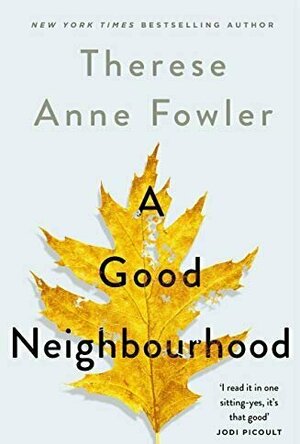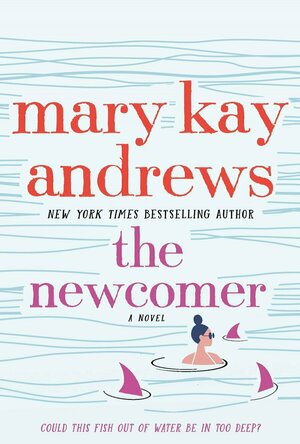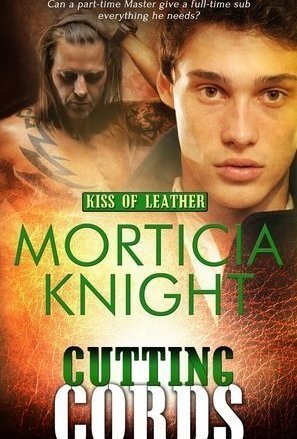Search
Search results
LilyLovesIndie (123 KP) rated Twelve (The MORE Trilogy, #3) in Books
Nov 5, 2018
Well honestly, IÕm running out of positive things to say about these books without repeating myself multiple times. This is, without a doubt, one of the best series I have ever had the privilege of reading.
As with the other books, the transition is seamless from one book too the next. The skill of Ms Franklin in telling her tale is absolutely sublime and makes reading an absolute pleasure.
This, the third installment of the series, has phenomenal pace and passion throughout. It just oozes from the page in giant wonderfulness. The twists and turns from the very start of this story leave you with incredible whiplash as you try to figure out whoÕs who, whoÕs good and whoÕs playing a double role. IÕve rarely encountered a book which has you experiencing so many different emotions all at once, and itÕs just excellent.
Be warned if you do read this, the last 20% is literally impossible to put down. Even though I was falling asleep and utterly exhausted, I honestly could not stop reading. I actually slapped myself to stay awake and pinched my cheeks to make myself wake up. IÕm one of these grumpy guts if I donÕt get sleep, so itÕs very rare anything keeps me awake, but by jove this book did it (last one that managed that was Harry Potter and the Deathly Hallows).
The revelations in this story came thick and fast, especially the final one (no spoilers here, but be prepared to pick your jaw up off the floor!) and I honestly did not want the story to end. In another first for a long while, I had an immense feeling of emptiness when I finished the book, and even now, several weeks after having finished it find myself missing Caleb and Ava. I need a spin offÉ.. please? ;)
Simply put, this was absolutely stupendous writing from the very start of the series and Franklin definitely does her plot and characters justice with this final installment. I honestly cannot recommend this book highly enough, and the series as a whole are firmly wedged on my favourites list, even ousting other popular ones such as Potter and True Blood to the top spot. And yes, itÕs 5 stars, but in all honesty, IÕd gladly give as many as I could because quite frankly, this book deserves every star in the sky! Well done Ms Franklin, this is phenomenal writing and I doff my cap to your amazing skills!
*This book was first reviewed on Lily Loves Indie as part of a blog tour, for which an ARC was received in return for an honest review*
As with the other books, the transition is seamless from one book too the next. The skill of Ms Franklin in telling her tale is absolutely sublime and makes reading an absolute pleasure.
This, the third installment of the series, has phenomenal pace and passion throughout. It just oozes from the page in giant wonderfulness. The twists and turns from the very start of this story leave you with incredible whiplash as you try to figure out whoÕs who, whoÕs good and whoÕs playing a double role. IÕve rarely encountered a book which has you experiencing so many different emotions all at once, and itÕs just excellent.
Be warned if you do read this, the last 20% is literally impossible to put down. Even though I was falling asleep and utterly exhausted, I honestly could not stop reading. I actually slapped myself to stay awake and pinched my cheeks to make myself wake up. IÕm one of these grumpy guts if I donÕt get sleep, so itÕs very rare anything keeps me awake, but by jove this book did it (last one that managed that was Harry Potter and the Deathly Hallows).
The revelations in this story came thick and fast, especially the final one (no spoilers here, but be prepared to pick your jaw up off the floor!) and I honestly did not want the story to end. In another first for a long while, I had an immense feeling of emptiness when I finished the book, and even now, several weeks after having finished it find myself missing Caleb and Ava. I need a spin offÉ.. please? ;)
Simply put, this was absolutely stupendous writing from the very start of the series and Franklin definitely does her plot and characters justice with this final installment. I honestly cannot recommend this book highly enough, and the series as a whole are firmly wedged on my favourites list, even ousting other popular ones such as Potter and True Blood to the top spot. And yes, itÕs 5 stars, but in all honesty, IÕd gladly give as many as I could because quite frankly, this book deserves every star in the sky! Well done Ms Franklin, this is phenomenal writing and I doff my cap to your amazing skills!
*This book was first reviewed on Lily Loves Indie as part of a blog tour, for which an ARC was received in return for an honest review*
Kristy H (1252 KP) rated A Good Neighborhood in Books
Mar 26, 2020
Oak Knoll is a close-knit multiracial neighborhood in North Carolina where everyone looks out for one another. Valerie Alston-Holt, a professor and single mother, has raised her biracial son, Xavier, there since he was small. Their calm life changes, however, when the Whitman family moves in next door. First they raze the current house and build a "Mcmansion," whose very existence threatens the health of Valerie's beloved historic oak tree. Brad Whitman is a local celebrity, known for his charisma and commercials for his company, Whitman HVAC. His wife, Julia, has long escaped her trailer park days and is now raising her daughters Julia and Lily in a privilege she once dreamed of. But soon the Alston-Holts and Whitmans find them themselves fighting over the oak tree's well-being and then, the budding romance between Julia and Xavier.
"An upscale new house in a simple old neighborhood. A girl on a chaise beside a swimming pool, who wants to be left alone. We begin our story here, in the minutes before the small event that will change everything."
This book took my heart and spit it right out again. Oh my goodness. It's a different, beautiful, and absolutely heartbreaking read. We're told from the very beginning--by our omniscient third person narrator--that something bad is going to happen. And yet, I lived in denial that this was true. I devoured this book in two halves. It's utterly engrossing, and the characters just pop off the pages. The teens, especially. Oh Juniper and Xavier. I will not easily forget either of you.
A Good Neighborhood tackles a host of timely topics, and it handles all of them deftly. Race, religion, sexism, feminism--none of these are exempt in the pages of this novel. We see whiteness as a symbolism for purity, and we watch as Juniper struggles with the set of values being pushed upon her by her mother and stepfather, including a "purity vow" to remain both a virgin and loyal to her future husband. And then there's Xavier, a talented musician, who has been raised by his strong mother after his father's death. She wants so much for her son to do anything, but yet lives in fear because he is biracial. Juniper, Xavier, and Valerie were such powerful characters.
I do not want to give much of the plot away, but I can tell you that this book is heartbreaking and beautiful. It will get you to think about racism and sexism. The strong themes of good versus evil are presented in such a unique and compelling manner. Adding the third-person piece just gives an extra piece to the story. This book is incredibly well-written and will stay with you for quite some time. 4.5 stars.
"An upscale new house in a simple old neighborhood. A girl on a chaise beside a swimming pool, who wants to be left alone. We begin our story here, in the minutes before the small event that will change everything."
This book took my heart and spit it right out again. Oh my goodness. It's a different, beautiful, and absolutely heartbreaking read. We're told from the very beginning--by our omniscient third person narrator--that something bad is going to happen. And yet, I lived in denial that this was true. I devoured this book in two halves. It's utterly engrossing, and the characters just pop off the pages. The teens, especially. Oh Juniper and Xavier. I will not easily forget either of you.
A Good Neighborhood tackles a host of timely topics, and it handles all of them deftly. Race, religion, sexism, feminism--none of these are exempt in the pages of this novel. We see whiteness as a symbolism for purity, and we watch as Juniper struggles with the set of values being pushed upon her by her mother and stepfather, including a "purity vow" to remain both a virgin and loyal to her future husband. And then there's Xavier, a talented musician, who has been raised by his strong mother after his father's death. She wants so much for her son to do anything, but yet lives in fear because he is biracial. Juniper, Xavier, and Valerie were such powerful characters.
I do not want to give much of the plot away, but I can tell you that this book is heartbreaking and beautiful. It will get you to think about racism and sexism. The strong themes of good versus evil are presented in such a unique and compelling manner. Adding the third-person piece just gives an extra piece to the story. This book is incredibly well-written and will stay with you for quite some time. 4.5 stars.

Noble Quran with Audio (Holy Koran in English)
Book and Education
App
The Noble Quran, also informally known as the Hilali-Khan translation Interpretation of the...

Conversation Therapy Lite - Questions for Expressive Language, Pragmatics, & Cognition
Medical and Education
App
Conversation Therapy gets people talking! Now you can try this professional speech therapy app to...
Lyndsey Gollogly (2893 KP) rated Inseparable (Rise of the Iliri #4) in Books
Feb 4, 2021
17 of 250
Kindle
Inseparable ( Rise of Iliri book 4)
By Auryn Hadley
Once read a review will be written via Smashbomb and link posted in comments
DISASTER! THE BLACK BLADES DISBANDED, AN ALLIANCE IN TURMOIL...
The intersecting worlds of the iliri, grauori, and men collide when an alliance is declared, and the humans renege. In the midst of offering an olive branch to other races, they seem secretly hellbent on destroying them all - and they begin by putting Sal on trial and disbanding the Black Blades. Auryn Hadley offers up deft commentary on racism between communities - melded with fantastical action-adventure in a world at war, and passionate erotic romance in this fourth installment of the Rise of the Iliri.
True to its title, in Inseparable, on the world of Ogun, it's the connections between all beings - human and otherwise - that will save or destroy them.
Her recent mission a success, fearless (and irresistibly arousing) iliri warrior Lieutenant Salryc Luxx gets thanks in the form of imprisonment by the Conglomerate of Free Citizens. Sal's not even sure what she's accused of, but she suspects it's the color of her pale skin - not her actions - that's really on trial.
Kinetry, an old comrade and ally of the Black Blades now forced to hold Sal, warns her that a rash of anti-iliri sentiment is sweeping Parliament and the military. In fact, it seems men don't care for any race but their own. But Kinetry doesn't know that the King of Anglia is on his way to the military stronghold. Nor does he know the King is bringing with him thousands of grauori soldiers, members of a race of formerly hidden human-like wolves whose hunting and battle skills are unmatched.
If the King arrives before Sal's trial is resolved, he'll learn something in the courtroom that may destroy all hope of the intended alliance. Torn between truth and treason, Sal must navigate political sensitivities to hold the three races together. And just when she seems to get somewhere, the Conglomeration disbands the Black Blades.
Been a while since I caught up with the blades this book was the best so far and yes I say that after every book! Sal is brilliant. My first yay moment was Dom and amAnglia turning up with the army to pull Sal out of jail! Then finally Zep got the job done! I almost squealed when she got her crown finally in place!! The book is just ram packed with moments of about time and thank Gods! Those pups are just out of control cute too!! It almost got me at the end almost I’m so glad she pulled it back! Looking forward to the next book!
Kindle
Inseparable ( Rise of Iliri book 4)
By Auryn Hadley
Once read a review will be written via Smashbomb and link posted in comments
DISASTER! THE BLACK BLADES DISBANDED, AN ALLIANCE IN TURMOIL...
The intersecting worlds of the iliri, grauori, and men collide when an alliance is declared, and the humans renege. In the midst of offering an olive branch to other races, they seem secretly hellbent on destroying them all - and they begin by putting Sal on trial and disbanding the Black Blades. Auryn Hadley offers up deft commentary on racism between communities - melded with fantastical action-adventure in a world at war, and passionate erotic romance in this fourth installment of the Rise of the Iliri.
True to its title, in Inseparable, on the world of Ogun, it's the connections between all beings - human and otherwise - that will save or destroy them.
Her recent mission a success, fearless (and irresistibly arousing) iliri warrior Lieutenant Salryc Luxx gets thanks in the form of imprisonment by the Conglomerate of Free Citizens. Sal's not even sure what she's accused of, but she suspects it's the color of her pale skin - not her actions - that's really on trial.
Kinetry, an old comrade and ally of the Black Blades now forced to hold Sal, warns her that a rash of anti-iliri sentiment is sweeping Parliament and the military. In fact, it seems men don't care for any race but their own. But Kinetry doesn't know that the King of Anglia is on his way to the military stronghold. Nor does he know the King is bringing with him thousands of grauori soldiers, members of a race of formerly hidden human-like wolves whose hunting and battle skills are unmatched.
If the King arrives before Sal's trial is resolved, he'll learn something in the courtroom that may destroy all hope of the intended alliance. Torn between truth and treason, Sal must navigate political sensitivities to hold the three races together. And just when she seems to get somewhere, the Conglomeration disbands the Black Blades.
Been a while since I caught up with the blades this book was the best so far and yes I say that after every book! Sal is brilliant. My first yay moment was Dom and amAnglia turning up with the army to pull Sal out of jail! Then finally Zep got the job done! I almost squealed when she got her crown finally in place!! The book is just ram packed with moments of about time and thank Gods! Those pups are just out of control cute too!! It almost got me at the end almost I’m so glad she pulled it back! Looking forward to the next book!
Kristy H (1252 KP) rated The Newcomer in Books
May 6, 2021
A fairly cute but rather unbelievable romance/mystery
When Letty Carnahan finds her sister Tanya dead, she knows she has to flee. Tanya warned her about this--if anything happened to her, Letty was to take Tanya's four-year-old daughter, Maya, and run. Letty has no idea where to go, but Tanya's left behind one clue: a magazine article with a motel circled. She and Maya arrive at the Murmuring Surf, a little motel in Florida, exhausted. Letty is convinced that Tanya's ex--Maya's father--a rich businessman is after them. But at "the Surf," the owner, Ava DeCurtis, takes a liking to Maya (and Letty). Despite the No Vacancy sign, she lets Letty and Maya stay in a tiny efficiency. But the rest of the hotel regulars regard Letty and Maya--the newcomers--with suspicion, as does Ava's son, local cop Joe DeCurtis. Joe is pretty convinced Letty is a fugitive and maybe even a murderer. As Letty tries to settle in and heal with Maya, she attempts to unravel exactly what happened to Tanya: and the more she finds out, the more it leads back to the Surf.
"Nobody could be trusted. Not after everything that had happened."
This is a cute, serviceable mystery-romance combo, albeit a slightly preposterous and unbelievable one. Letty flees Tanya's murder scene successfully, a wanted criminal, recognized by no one except Joe, an upstanding, rule-abiding cop who doesn't turn her in. And when the FBI enters the tale, their actions seem highly unreasonable, but... I guess we are supposed to believe anything in the name of love?
As for this love, it's complete insta-love and honestly, at times, a little cringe-worthy. Joe falls for Letty basically on sight and is rather pushy in trying to convince her to be in a relationship. (Hey this is crazy, we just met, I'm not turning you in, let's move in together... umm ok?) It was all a bit much.
Now, the old folks staying at the motel were a total trip. I could completely buy their crazy. And I loved Ava, who was a sweet, overly-trusting, but tough and brave mom, who just wanted to take care of everyone. (I didn't believe that Maya, who had endured great trauma, just sweetly sat and colored for hours each day while Letty worked--I'd like to meet that four-year-old!) The motel setting was spot on, and I desperately wanted to be at the beach while reading the entire book.
Overall, this one held my attention and I couldn't help but root for Letty (and Maya), but it probably won't stick with me. Joe often rubbed me the wrong way and some of the plot points had me rolling my eyes. Still, a cute summery read. 3 stars.
"Nobody could be trusted. Not after everything that had happened."
This is a cute, serviceable mystery-romance combo, albeit a slightly preposterous and unbelievable one. Letty flees Tanya's murder scene successfully, a wanted criminal, recognized by no one except Joe, an upstanding, rule-abiding cop who doesn't turn her in. And when the FBI enters the tale, their actions seem highly unreasonable, but... I guess we are supposed to believe anything in the name of love?
As for this love, it's complete insta-love and honestly, at times, a little cringe-worthy. Joe falls for Letty basically on sight and is rather pushy in trying to convince her to be in a relationship. (Hey this is crazy, we just met, I'm not turning you in, let's move in together... umm ok?) It was all a bit much.
Now, the old folks staying at the motel were a total trip. I could completely buy their crazy. And I loved Ava, who was a sweet, overly-trusting, but tough and brave mom, who just wanted to take care of everyone. (I didn't believe that Maya, who had endured great trauma, just sweetly sat and colored for hours each day while Letty worked--I'd like to meet that four-year-old!) The motel setting was spot on, and I desperately wanted to be at the beach while reading the entire book.
Overall, this one held my attention and I couldn't help but root for Letty (and Maya), but it probably won't stick with me. Joe often rubbed me the wrong way and some of the plot points had me rolling my eyes. Still, a cute summery read. 3 stars.

Dr. Panda Restaurant 2
Education and Games
App
**Best Kids App in more than 50 countries!** Dr. Panda’s Restaurant is re-opening, and this time...
Debbiereadsbook (1551 KP) rated Cutting Cords (Kiss of Leather #6) in Books
May 3, 2018
love this one!
Independent reviewer for Archaeolibrarian, I was gifted my copy of this book.
Book 6 in the series, and blah blah blah, READ the others first! Cos I SAID so!!
I don't recall if we met Liam in previous, or he was just mentioned as a friend of the other subs, but we certainly don't meet Master Neal til this book.
Liam is traumatized by the death of his previous Master, and is skittish, and very socially awkward. Watching Master Neal doing a flogging at Kiss Of leather as part of his being accepted into the club, Liam is all kinds of torn up. For his love for Master Mark, but his need to move on. Being introduced to the painfully shy Liam, Master Neal's protectiveness goes into overdrive. He never wanted anyone like he wants Liam, and if he can be who and what Liam wants and needs, he will bide his time, treat Liam with the kid gloves he needs.
I said in my review of Gaining trust that I thought Master Jordan was my most favourite, but now I have a dilemma! Because I LOVED Master Neal! And Liam, so painfully socially awkward! oh! Loved them both!
Master Neal never wanted to do the TPE thing, but for Liam, he might just be able to do it. Liam needs that, and Master Neal needs Liam. He just didn't know he did, til he met Liam.
I can't express how much Liam's story affected me, he had a painful upbringing and then meeting Master Mark, a much MUCH older guy, he was very sheltered. Watching him come out of himself, and become the young man who helps Master Neal at his tattoo and piercing shop was great fun. Master Neal is very playful with Liam, and while Liam needs the TPE, he also learns there are other things he needs.
While the on going story arc is somewhat finished, it goes into different, more deadly direction. Spoilers I ain't giving!
We are introduced to Tobey and Master Hunter, and also a couple of very interesting characters at Master Neal's tattoo shop! A story for Ray and Cruella would make a very welcome addition to this series!!
5 full stars
**same worded review will appear elsewhere**
Book 6 in the series, and blah blah blah, READ the others first! Cos I SAID so!!
I don't recall if we met Liam in previous, or he was just mentioned as a friend of the other subs, but we certainly don't meet Master Neal til this book.
Liam is traumatized by the death of his previous Master, and is skittish, and very socially awkward. Watching Master Neal doing a flogging at Kiss Of leather as part of his being accepted into the club, Liam is all kinds of torn up. For his love for Master Mark, but his need to move on. Being introduced to the painfully shy Liam, Master Neal's protectiveness goes into overdrive. He never wanted anyone like he wants Liam, and if he can be who and what Liam wants and needs, he will bide his time, treat Liam with the kid gloves he needs.
I said in my review of Gaining trust that I thought Master Jordan was my most favourite, but now I have a dilemma! Because I LOVED Master Neal! And Liam, so painfully socially awkward! oh! Loved them both!
Master Neal never wanted to do the TPE thing, but for Liam, he might just be able to do it. Liam needs that, and Master Neal needs Liam. He just didn't know he did, til he met Liam.
I can't express how much Liam's story affected me, he had a painful upbringing and then meeting Master Mark, a much MUCH older guy, he was very sheltered. Watching him come out of himself, and become the young man who helps Master Neal at his tattoo and piercing shop was great fun. Master Neal is very playful with Liam, and while Liam needs the TPE, he also learns there are other things he needs.
While the on going story arc is somewhat finished, it goes into different, more deadly direction. Spoilers I ain't giving!
We are introduced to Tobey and Master Hunter, and also a couple of very interesting characters at Master Neal's tattoo shop! A story for Ray and Cruella would make a very welcome addition to this series!!
5 full stars
**same worded review will appear elsewhere**
Carma (21 KP) rated How to Lose a Fiancé in Books
Jun 17, 2019
Sophia is tired of being told how to live her life by her overbearing, overprotecting father. When he calls her into his office to let her know she will be sent to Greece to marry a stranger she has had enough. She doesnt care that Dions acquisition of her fathers company will save their family, according to her father. She only wants her freedom. After thinking things through she decides to be the worst possible fiancé any one man could ever imagine. That way hed be forced to send her home and shed be free to follow her dreams.
Dion cant believe he agreed to marry the daughter of the man in charge of the company he wants to acquire. His bastard of a biological fathers old company, but no one will know that little tidbit of information. He looked Sophia up online and she seemed to fit into the stereotypical corporate wife he needs. Too bad the walking disaster that heads over to him in the airport is not quite what he was expecting.
Part of Sophias plan involves dressing as wildly as she can without trying to look like she has gone off the deep end. The itchy woolen sweater she chose to change into when they landed only adds to the hideousness of it all. The look on Dions face is worth the itching. Now to fully put her plan into action, she must find a taxidermy fox.
Dion has no idea what to do with this hideous fox that has somehow made its way into his home. Soon hatching a plot with the fox we first encountered in book 1 How to win a fiance. He soon figures out what Sophia is actually up to and together they agree to find a common ground and go ahead with the wedding. Theirs could be a good friendship opportunity for each other, each getting what they desire in life.
Dion and Sophia have pasts and families that dont lend themselves to Hallmark Movie Channel heart touching sentiment. Dion loses the one father figure he has, and Sophias actual father is lacking in just about every redeeming quality. They work through it together and make their own family ties. I voluntarily read and reviewed an advance reader copy without expectations. 4 ½ stars for this newest release from Ms. London.
Dion cant believe he agreed to marry the daughter of the man in charge of the company he wants to acquire. His bastard of a biological fathers old company, but no one will know that little tidbit of information. He looked Sophia up online and she seemed to fit into the stereotypical corporate wife he needs. Too bad the walking disaster that heads over to him in the airport is not quite what he was expecting.
Part of Sophias plan involves dressing as wildly as she can without trying to look like she has gone off the deep end. The itchy woolen sweater she chose to change into when they landed only adds to the hideousness of it all. The look on Dions face is worth the itching. Now to fully put her plan into action, she must find a taxidermy fox.
Dion has no idea what to do with this hideous fox that has somehow made its way into his home. Soon hatching a plot with the fox we first encountered in book 1 How to win a fiance. He soon figures out what Sophia is actually up to and together they agree to find a common ground and go ahead with the wedding. Theirs could be a good friendship opportunity for each other, each getting what they desire in life.
Dion and Sophia have pasts and families that dont lend themselves to Hallmark Movie Channel heart touching sentiment. Dion loses the one father figure he has, and Sophias actual father is lacking in just about every redeeming quality. They work through it together and make their own family ties. I voluntarily read and reviewed an advance reader copy without expectations. 4 ½ stars for this newest release from Ms. London.
Sophia (Bookwyrming Thoughts) (530 KP) rated Echoes in Books
Jan 23, 2020
<b><i>I received this book for free from Author in exchange for an honest review. This does not affect my opinion of the book or the content of my review.</i></b>
<h2><strong>Three words: Hackers. Go. Missing.</strong></h2>
I'm not talking baby hackers who have no clue what they're doing and slipped up badly I'm talking top of the ladder ones.
Mallory Park is a hacker who moderates The Forum, a message board where hackers are anonymous, crack down on the dirty secrets of companies, and leak them out to the world anonymously. She's extremely motivated and passionate about her work, and likes to have control she's independent, wants to do her own thing, and based on her background, it definitely fits her character. Mallory, however...
Just comes out cold. Apathetic. Indifferent. She doesn't really have any clue what to do with herself because hacking IS who she is. She is also extremely brilliant (I would love to have her math skills right now in Calculus...), hates being touched (much like me...), and is as awkward as David 1 and David 2 (one of them is a <a title="The Sorcerer's Apprentice review" href="http://www.bookwyrmingthoughts.com/movie-review-the-sorcerers-apprentice"; target="_blank" rel="noopener tag">Physics major</a> and the other is <a title="Steelheart by Brandon Sanderson review" href="http://www.bookwyrmingthoughts.com/review-steelheart-by-brandon-sanderson"; target="_blank" rel="noopener tag">terrible with metaphors</a>).
While I like Mallory, I think Mallory came more out of her shell when she meets Warden. Warden is very cheery, optimistic, and hilarious he's really just one of those adorable nerds who would love to squish hug. And despite the fact he is introduced as Mallory's online friend from The Forum, I can hear his voice and see his facial expressions leaping off the screen at Mallory.
There's so much anticipation and danger (and Warden's humor laced throughout) as Mallory gets closer to finding out about the missing hackers, but in the long run, <em>Echoes</em> really just teaches about online safety in a similar, yet different way compared to other books related to online safety.
But you should really just read it for Warden's humor.
<a href="https://bookwyrmingthoughts.com/arc-review-echoes-by-laura-tisda/"; target="_blank">This review was originally posted on Bookwyrming Thoughts</a>
<h2><strong>Three words: Hackers. Go. Missing.</strong></h2>
I'm not talking baby hackers who have no clue what they're doing and slipped up badly I'm talking top of the ladder ones.
Mallory Park is a hacker who moderates The Forum, a message board where hackers are anonymous, crack down on the dirty secrets of companies, and leak them out to the world anonymously. She's extremely motivated and passionate about her work, and likes to have control she's independent, wants to do her own thing, and based on her background, it definitely fits her character. Mallory, however...
Just comes out cold. Apathetic. Indifferent. She doesn't really have any clue what to do with herself because hacking IS who she is. She is also extremely brilliant (I would love to have her math skills right now in Calculus...), hates being touched (much like me...), and is as awkward as David 1 and David 2 (one of them is a <a title="The Sorcerer's Apprentice review" href="http://www.bookwyrmingthoughts.com/movie-review-the-sorcerers-apprentice"; target="_blank" rel="noopener tag">Physics major</a> and the other is <a title="Steelheart by Brandon Sanderson review" href="http://www.bookwyrmingthoughts.com/review-steelheart-by-brandon-sanderson"; target="_blank" rel="noopener tag">terrible with metaphors</a>).
While I like Mallory, I think Mallory came more out of her shell when she meets Warden. Warden is very cheery, optimistic, and hilarious he's really just one of those adorable nerds who would love to squish hug. And despite the fact he is introduced as Mallory's online friend from The Forum, I can hear his voice and see his facial expressions leaping off the screen at Mallory.
There's so much anticipation and danger (and Warden's humor laced throughout) as Mallory gets closer to finding out about the missing hackers, but in the long run, <em>Echoes</em> really just teaches about online safety in a similar, yet different way compared to other books related to online safety.
But you should really just read it for Warden's humor.
<a href="https://bookwyrmingthoughts.com/arc-review-echoes-by-laura-tisda/"; target="_blank">This review was originally posted on Bookwyrming Thoughts</a>





